Please login or click here to join.
Forgot Password? Click Here to reset pasword
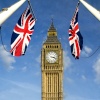 | 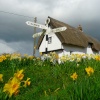 | 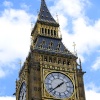 | 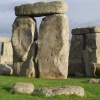 | 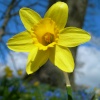 | 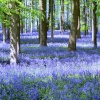 |
Learn the basic facts about the country of England, including location, climate, landscape, population, currency, government and more, and explore our new historical facts database.
England is an island country situated in North-West Europe, on the island of 'Great Britain'.
Great Britain is made up of 3 countries - England, Scotland, and Wales (see map below).
Covering two-thirds of Great Britain, England is the largest country on the island.
Map of Great Britain, showing the countries of England, Scotland, and Wales.
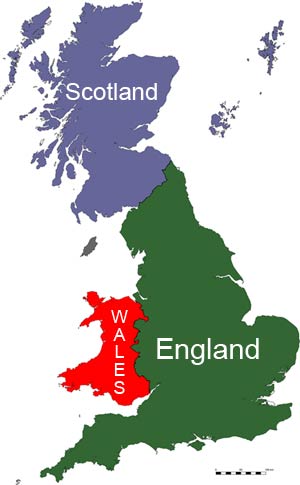
Below is a map showing the whole of the island of Great Britain in relation to the rest of Europe. Great Britain is the largest island in Europe and the eighth largest island in the world.
France, on mainland Europe, is approx 35 kilometres away from the island of Great Britain and since 1994 has been joined to the island via an undersea rail network called the Channel Tunnel.
The Channel Tunnel runs from Folkestone in the county of Kent ( Southern England) beneath the English Channel, to arrive at Coquelles near Calais in northern France.
At 31.4 miles (50.5 km) it is the second longest undersea tunnel in the world, Japan's Seikan Tunnel being the longest at 33.49 miles.
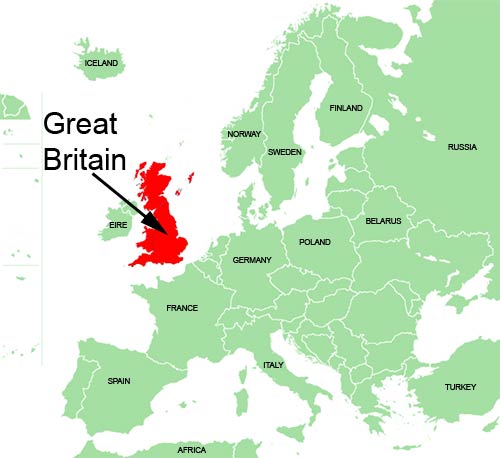
Map of Great Britain (in red) and mainland Europe.
The British Isles
The group of islands known as 'The British Isles' consist of Great Britain (the largest island in the group), Ireland, Northern Ireland, the Orkneys, the Shetland Islands, the Isle of Man, the Isle of Wight, Isle of Scilly, the Hebrides, and the Channel Islands which lie just off the coast of France and include the islands of Jersey and Guernsey.
There are said to be over 6,000 islands in the British Isles, with Great Britain being the largest, and Bishop's Rock not only being the smallest island in the British Isles, but also the smallest island in the world!
The United Kingdom (UK)
The UK, or rather 'The United Kingdom of Great Britain and Northern Ireland' includes the island of Great Britain (consisting of the countries of England, Scotland, and Wales), and the North-East part of Ireland (Eire). The country of England accounts for around 84% of the population of the UK
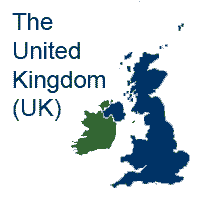
This map shows the whole of the United Kingdom (in blue)
Key facts to remember -
The English summer consists of "three fine days and a thunderstorm". - Charles II
England's weather can be summed up in two words - mild & varied. One minute it can be gorgeous sunshine, the next it can be cloudy, cold and raining. This unpredictability also makes England's weather extremely interesting and frequently talked about.
The warmest part of the country is the South, with Faversham in Kent having the highest ever recorded temperature of 38.5C (101.3F) on the 10th August 2003.
During the winter months the warmest parts of England are along the South, and South-West, particularly the counties of Devon and Cornwall and around the London area.
The Lake District, one of the most scenic regions of England, is also the wettest.
The bottom line is, if you plan on visiting England or any other part of Britain, always come prepared for any kind of weather.
![]() To see what the weather is like in England right now and for a detailed forecast, please click here
To see what the weather is like in England right now and for a detailed forecast, please click here
As varied as the weather, comes the beautiful English landscape. From the chalk cliffs and rolling hills of the South, to the Mountainous ranges of the Lake District in the North.
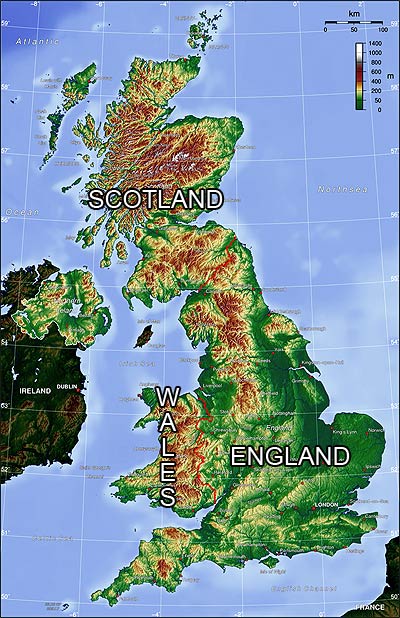
Topography map of the UK. This map shows how England is relatively low-lying compared to the countries Scotland in the North, and Wales in the West. In the North of England can be seen The Pennines, a mountain range known as 'the backbone of England' which stretch all the way from Scotland down to the Peak District in the county of Derbyshire, England.
High in the North-West close to The Pennines can be seen the mountainous region of The Lake District. The two high areas in the South-West are Exmoor National Park, and lower down is Dartmoor National Park.
Interesting facts about England and its landscape
In 2005 the population of England was approximately 50.4 million.
Most of England's population lives in or around its major cities such as London (7.5 million).
Population Facts & Figures
England's flag is the St George's cross -
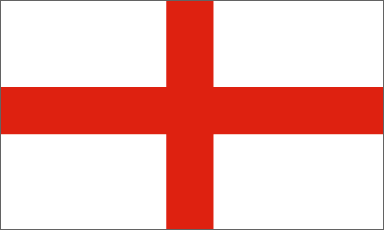
The St George's Cross is the national flag of England
The Union Jack (below) is the flag of the UK. It is a symbol of the administrative union of the countries of the United Kingdom.
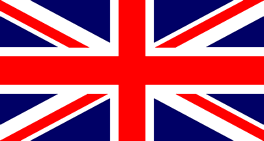
The Union Jack - Flag of the UK
![]() For more England flags, visit our England flags page
For more England flags, visit our England flags page
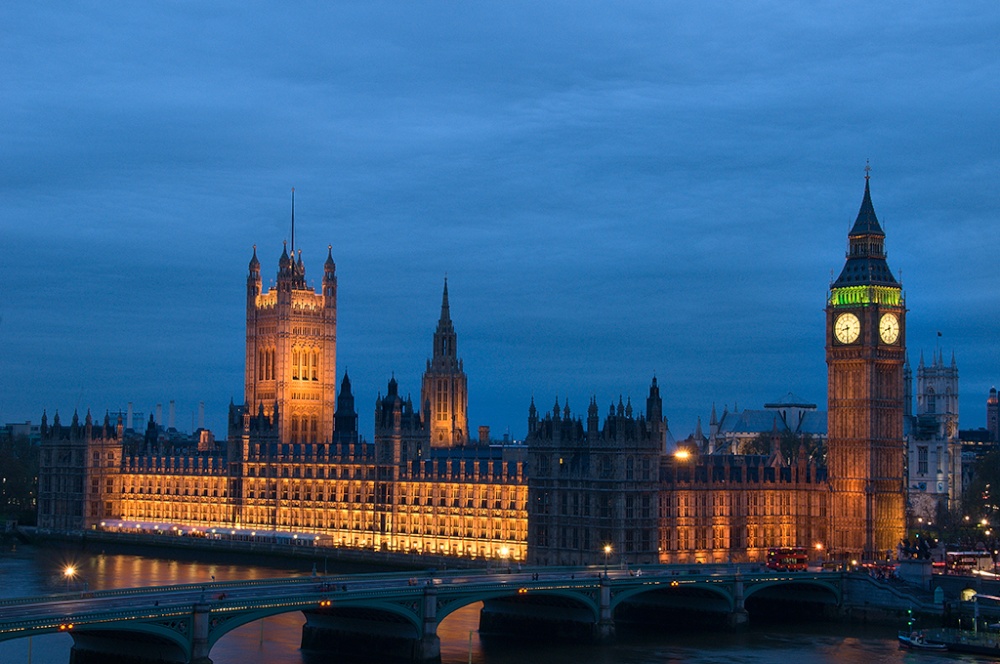
Pictured: Palace of Westminster, by Joseph Votano. This is where members of parliament (MPs voted for by the people) meet to discuss and debate issues and decide new laws.
"There is a forgotten, nay almost forbidden word, which means more to me than any other. That word is England". - Sir Winston Churchill
There is no government just for England, and hasn't been since 1707. The government, although seated in London, is in fact a UK government.
The UK government is known as a 'Constitutional Monarchy' and a 'Parliamentary Democracy'.
A 'Constitutional Monarchy' can be defined as a King or Queen that reigns over a country, but does not govern it. Our Queen is head of state, but does not run the country.
A 'Parliamentary Democracy' is one in which the people choose representatives at regular elections to govern the country.
Key facts to remember -
![]() Visit Parliament's website for details on how it works, history, and much more.
Visit Parliament's website for details on how it works, history, and much more.

Queen Elizabeth II (pictured) is the monarchy of the United Kingdom and head of state. She ascended the throne in 1952, and on 9th September 2015 she became the longest-reigning monarch, surpassing the 63 year reign of her great-grandmother Victoria.
The currency of England and Britain is officially called Pounds Sterling.
The currency sign is the pound sign: £
A pound is made up of 100 pence, or p for short. (pence is plural of penny)
Coins currently in circulation (copper, silver and gold)-
1p (pence), 2p, 5p, 10p, 20p, 50p, £1 (one pound) and £2
Notes currently in circulation -
£5, £10, £20, £50, £100
For pictures of what our currency looks like, please click here to see pictures of UK currency.
![]() To see the current exchange rates, please visit xe.com.
To see the current exchange rates, please visit xe.com.
Not that you know some basic facts about England, we recommend that you now head over to our Counties of England page, to learn about the counties of England, and discover and learn about the places within each one.